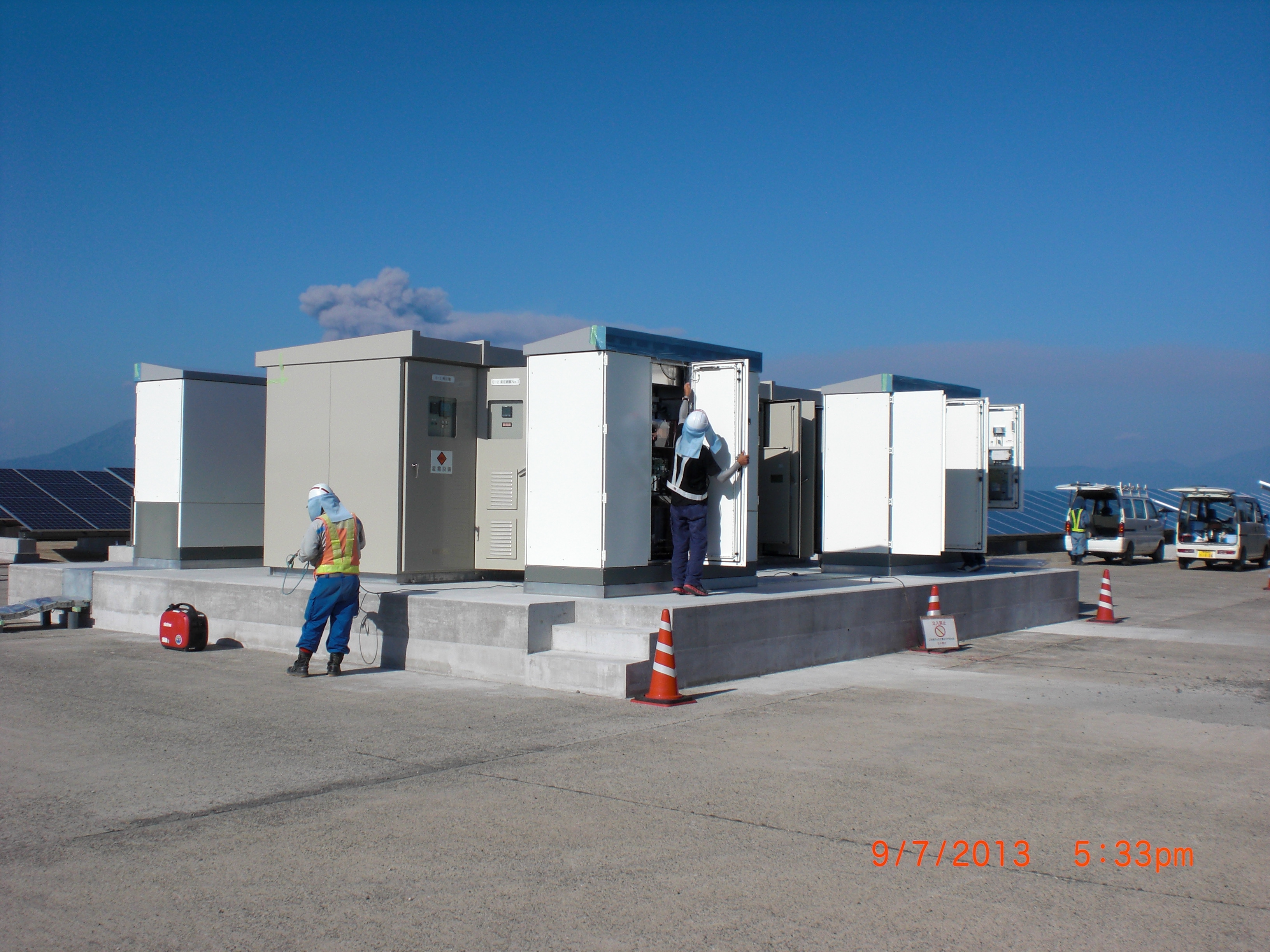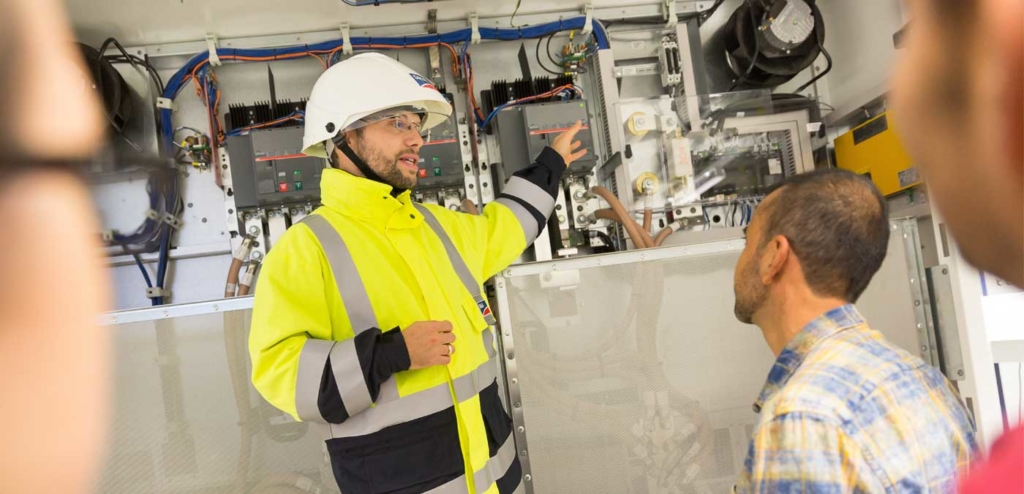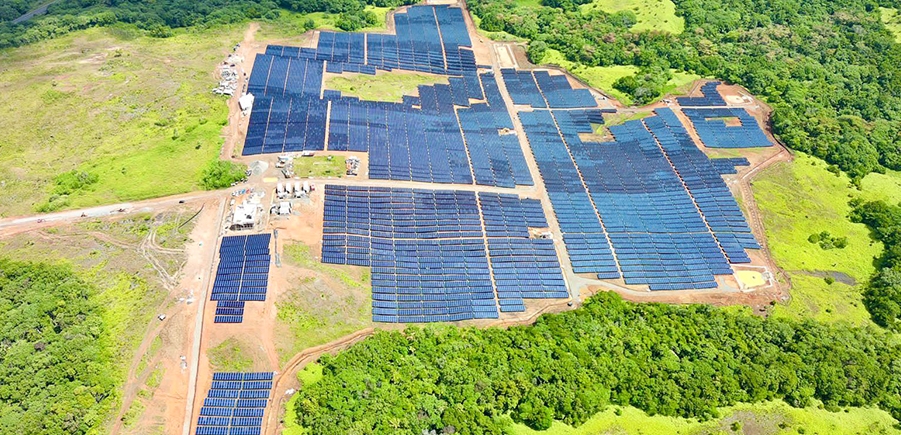Right in the Thick of Commissioning Japan’s Largest PV Power Plant

Danny Büder is a service technician of the SMA Global Support team in Niestetal. For his job, he travels around the world. In fact, over the past two years alone, the 29-year-old has been to 13 different countries. With Toni Berger and employees from other SMA subsidiaries, Danny recently brought Japan’s largest PV power plant into operation. Over a cup of coffee he tells me how the work went in the southern Japanese city of Kagoshima, and what the SMA team encountered in the way of unusual features and challenges.
Danny, how long did the commissioning of the PV power plant take, and how many days did you stay in Japan?
Altogether, I was in Japan for 69 days. Then Toni had a second assignment. Working with Japanese employees, he brought the rest of the 70 Megawatt plant into operation.
Thus, the commissioning took approximately 90 days in total.
What do you have to watch out for when starting up such a large PV plant?
The work on the devices had to be performed with great precision. All in all, our team monitored supply voltages, configured the devices for the utility grid and checked the 1,260 Sunny String Monitors, 140 Sunny Central inverters and six communication units (Com-units) for errors and for correct torque. That means that we tested 20,720 DC strings for correct voltage and polarity.
What challenges did you face while commissioning?
At times we had quite a struggle with the heat — no wonder, with temperatures between 30°C and 35°C, and humidity between 87 and 90 percent. With the volcanic island of Sakurajima only about 30 kilometers away, the modules were frequently covered by a light film of ash, and every once in a while the entire city of Kagoshima disappeared in the ash rain.
Were the Japanese customers satisfied with your work?
They were extremely satisfied, but at the same time also very demanding. The customers asked a lot of interesting questions and wanted to know everything about the plant in great detail. They frequently checked to see that everything was in order and looked over our work. I was definitely impressed by the very careful and painstaking manner in which the Japanese work. I’ve never seen such accurately oriented modules as the ones in this PV plant.
What was it like working with our Japanese colleagues?
Despite the cultural differences and the language barrier we got along very well as a team. In addition to Toni and I, three Japanese service employees, an Australian SMA employee as well as a Korean and a Thai technician all worked together on the commissioning. Naturally, the mindset is a little different than in Germany, but that’s what makes my work so interesting.
What do you mean by that, exactly?
When an error occurs, the matter is not directly broached. Toni and I were prepared for that because of the intercultural training at SMA. So when we noticed that something wasn’t working perfectly, we discussed the work processes again in a brief, personal conversation. However, when we did that, we had to be careful that we didn’t give our Japanese employees any instructions in the presence of their supervisor. That would have been seen as being disrespectful of their chain of command. All in all, everyone involved was very appreciative of our collaboration and assistance. Something else that’s striking is the Japanese work model, which is exceptionally safety-conscious. Every morning there was a safety instruction before we started working in our teams. Even at the beginning, before there was any voltage in the plant. The early morning exercise at the PV plant, which really worked up a sweat, was also a completely new experience.
Were there other faux pas that you were able to avoid, thanks to your intercultural training at SMA?
Yes, for example I knew ahead of time that the Japanese don’t wear their street shoes when they go to the restroom, but instead have different shoes for this, ready and waiting. There were also some things that differ from Europe at mealtime. For instance, you should never stick your chopsticks vertically into the rice because this gesture is done at funeral ceremonies. Eating cross-legged was not entirely comfortable, but it was an interesting experience. The Japanese forgive you for little mistakes and are pleased with everything you might know about their culture.
What did you like best about Japan?
I really like the architecture and also the countryside. The volcanic island and the primeval-seeming flora were impressive. The food was also very good. The country has a fantastic food culture with interesting spices. And I have fond memories of our karaoke evenings and the relaxing bath in the hot volcanic ashes. Japan is definitely on my list of top ten favorite countries.
Danny, thank you for giving us a peek at what’s going on behind the scenes.
Additional information about the start-up of Japan’s largest PV power plant can be found in our press release.



Feel free to contribute!